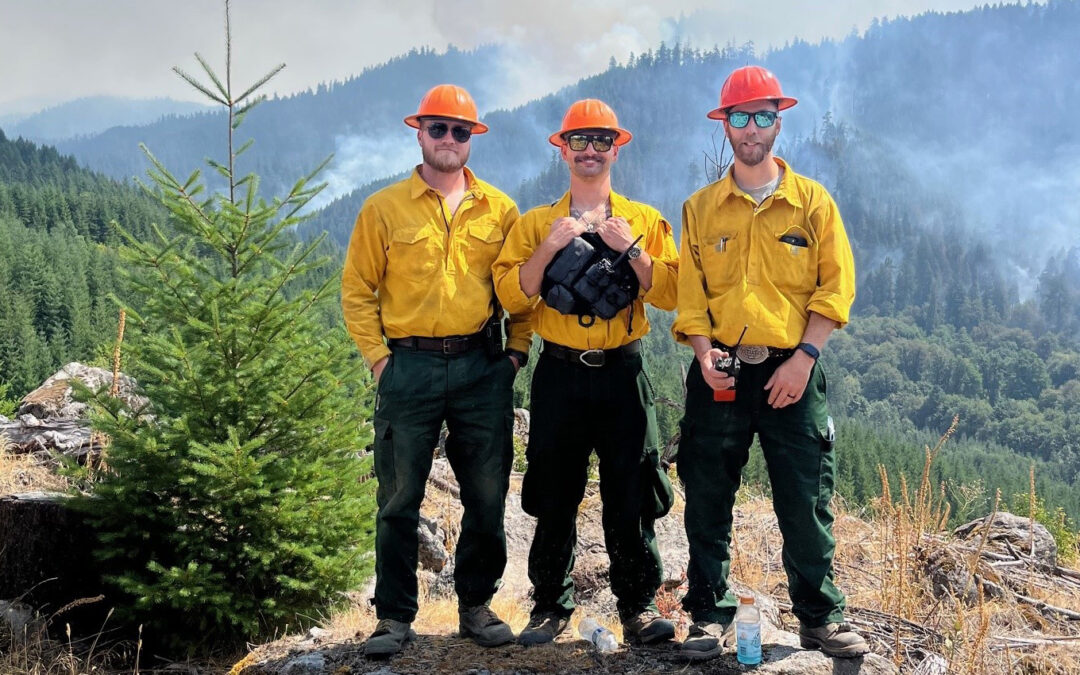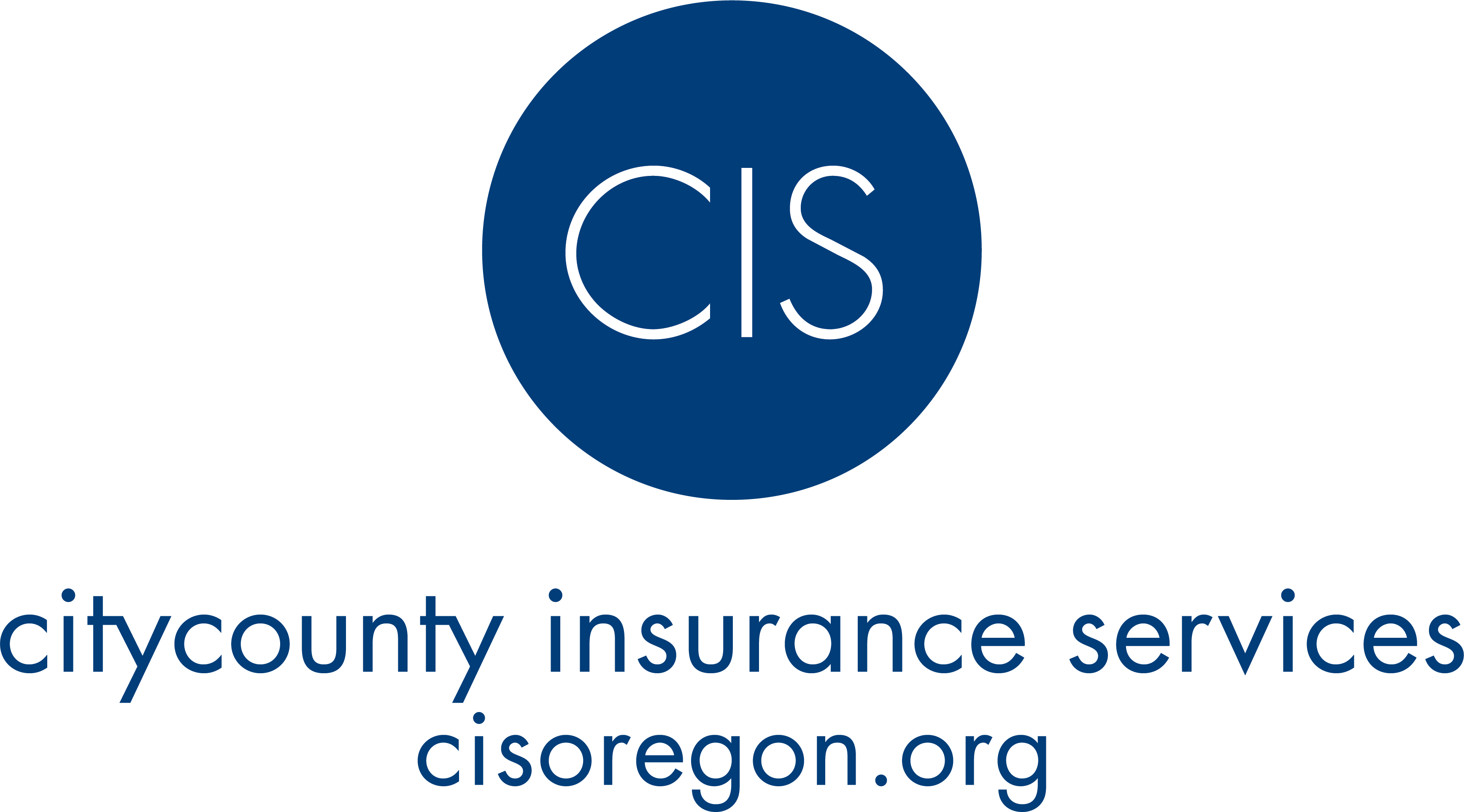
May 24, 2024 | AOC Business Partner
Sponsored content contributed by AOC Business Partner: Public Surplus
Public Surplus has partnered with AOC to help counties sell surplus property online through their online auction website. If your county or department has surplus equipment, vehicles, real estate, tax sale property, or anything else, Public Surplus can help you sell it quickly with some of the lowest buyer’s premium fees in the country!
The Public Surplus online auction system was created with unique capabilities exclusively for public agencies. We are confident that our solution will generate more revenue, increase transparency, and reduce the overhead of your surplus operations.
Below are just a few of the many features that over 4,000 government agencies are taking advantage of today.
Features:
- Comply with state, federal, and local regulations: Designed specifically for government agencies you can rest assured that we designed our system to meet and exceed all regulations regarding surplus disposal for your agency.
- Simplicity: Simple navigation and ease of use, all without sacrificing powerful functionality.
- Large/Qualified Buyer Database: Increase the number of buyers from your own community and combine them with the largest database of qualified buyers for government agencies.
- Increase Revenue – typically 30% – 60% more net revenue when compared to live auctions. We consistently out perform our online competitors as well.
- NO COSTS: Our solution is easy on the budget. There is no cost to your agency when selling on Public Surplus. Free registration, free listing and free payment collections. All fees are paid by the buyer in the form of a buyer’s premium and the agency will not be charged anything. Lower buyer’s premium available with the AOC program!
- NO commitment required: With a no cost solution many agencies don’t require a contract and can use us on an at will basis. If a contract is required please ask us about one of our national cooperative contracts.
- Auction Extensions: Increase revenue and parity with our auction extensions. Everyone has an equal chance to compete while driving up the prices of your auctions.
- Specific and Customized Reporting: Our reporting solution is second to none. Let us surprise you with just how comprehensive and simple it is to pull auction data.
- Payment Collections: Let us take away the hassle of collecting payment from buyers.. Buyers can pay via credit card and wire transfers for convenience and security.
- Control: Live auctions and many online solutions leave government agencies powerless when selling their surplus assets. Public Surplus gives you and your agency complete control. Set reserve pricing; retract auctions, and so much more.
- Transparency: Increased visibility coupled with increased access are a winning combination for government agencies. We know of no other online solution that offers the level of transparency Public Surplus does.
- Customer Service: Unmatched customer service. Your agency will have a dedicated support representative to assist you at anytime during business hours. Whether it be for training or just simple questions on the value of an item you are listing, our support representatives are there to assist your agency.
Our brief 30-minute online presentation is the best way to show you the power of our online auction system when coupled with software designed specifically for public agencies. Please reach out to Jaren Waters (801)-932-7000 Ext. 428 jarenwaters@thepublicgroup.com – if you are interested in viewing a presentation about Public Surplus.
If you are ready to get started selling with Public Surplus, click this link and fill out the one-page registration application. The registration link below will connect you to the Public Surplus/AOC program.
Please call us today to find out how your county can benefit!

May 24, 2024 | AOC Business Partner
(Pictured above: Weston Tilton, roads manager; Niko Monaco, silviculture forester; and Dylan Johnson, forester, on our Springfield tree farm in Oregon. Smoke from a wildfire is visible in the background.)
Sponsored content contributed by AOC Business Partner: Weyerhaeuser
In September 2020, the Holiday Farm Fire burned across nearly 166,000 forested acres in Oregon. Some of those impacted acres — including some acres of Weyerhaeuser land — were so damaged the soil couldn’t hold water. That meant many seedlings planted there would not survive.
“As foresters, we put our hearts and souls into these places, so it’s devastating to see them like that,” says Nate Meehan, a forest engineering specialist in Oregon’s Mid Coast tree farm. “But that’s also what motivates us to keep going, no matter what challenges we face.”
Post-wildfire recovery on Weyerhaeuser’s impacted tree farms — Springfield, Snow Peak, South Valley and Clackamas — is a long-term process requiring patience, collaboration and experimentation. All while the next wildfire season looms just around the corner.
“Fire prevention and readiness is top of mind, and we’ve worked very hard to increase our capacity to respond while also working on reforestation,” says Niko Monaco, a silviculture forester in Springfield. “Nothing has been more important than building strong relationships with each other, with our state and federal partners, and with the contractors who jump into action with us when needed.”
MAKING UP FOR LOST TIME
The Holiday Farm Fire footprint is significant, and replanting damaged areas requires a massive influx of tiny new trees. Weyerhaeuser’s Springfield tree farm alone plants an average of five million seedlings each year; most of our other Oregon tree farms plant one or two million seedlings.
To help get trees in the ground, everyone on the Springfield forestry team has dedicated extra time to replanting and recovery. Each of Springfield’s foresters is a lead on a large recovery project.
“Fires tend to spark growth of new competing species that can be more tenacious than the previous ones that grew in those areas, taking moisture and nutrients away from our seedlings,” says Dylan Johnson, who’s overseeing vegetation management for Springfield. “And that’s just one complicating factor converging with many others.”
Weather also complicates things. The summer of 2022 brought drought and unusually high temperatures, which caused widespread mortality of newly planted seedlings. The Springfield team worked to understand the size and quality they needed in their replacement trees to help them survive, then replanted the areas most affected. They’re making steady progress despite such setbacks, whittling the initial estimated recovery time from seven years down to four.
“It’s a passion project for many of us, and everyone involved is doing a phenomenal job,” Niko says. “It’s amazing to see such dedication and determination at work.”
TAKING PROACTIVE STEPS TOGETHER
Working hard on recovery efforts while simultaneously planning for future fires is hard both mentally and emotionally on our employees and contractors. But they say they’re buoyed by the sense everyone is in it together — not just within Weyerhaeuser, but across the entire industry.
“During the Holiday Farm Fire, I worked shoulder to shoulder with our competitors,” Nate says. “We were completely synchronized, putting every ounce of our energy into fighting the fire. Without our combined numbers and prevention efforts on our own lands, the government would have a much harder time controlling the wildfires that occur nearly every year now.”
Over the last four years, our Oregon tree farms have improved their strategies and tools, which include hoses, pumps, water tenders, fire engines, helicopters and heli-ponds that provide a source of water when needed. And our Aviation team has long played a critical role in controlling the spread of wildfire on our property.
“Many wildland fires take place in hot, high and radical terrain, which makes it difficult to reach them,” says Michael Stephens, chief pilot for Western Timberlands Aviation. “In order to respond, our Aviation team spends a lot of time on training and certification each year. It’s a lot of pressure, and pilots need to have the skills and competencies to fly this mission safely.”
Historically, our Aviation team has been dedicated to fires on our property. But a new Industrial Resource Agreement with the Oregon Department of Forestry allows certified private contracting crews to put out fires on state lands, which are often adjacent to our farms.
“The ODF contract has been beneficial in that our team is able to reach fires before they involve our property and spread to nearby communities,” Michael says.
Nate agrees and is excited about the new levels of partnership the agreement unlocks.
“It’s a win-win, because it gives our planting and harvest crews paid work in their off-season,” Nate says. “I’m also involved in the ODF’s Local Resource Boss program, which allows me to direct crews and other resources to an ODF-controlled fire. That sense of partnership is crucial to our success.”
LIGHTENING THE LOAD
As more employees gain wildfire experience and firefighting certification, the burden of keeping our property and communities safe can be spread between more people.
“Of course, those of us in the company who respond to fires when needed don’t have quite the level of stress that professional wildland firefighters have, but events like the Holiday Farm Fire can still be traumatizing,” Nate says. “I’m so glad we can turn to resources like the Fighting Fires Together Campaign to get support if we need it. It could change somebody’s life.”
Now in its third year, Fighting Fires Together is a partnership between Weyerhaeuser and Firefighter Behavioral Health Alliance to help provide specialized support and mental health resources for wildland firefighters. Free resources are available to support the mental health of firefighters, their families and their communities through mental health tips and resources, community groups, occupationally aware mental health professionals and more.
“It’s a big step just to have a conversation about firefighting and mental health,” Niko says. “No one was really talking about it until just a couple years ago, and it’s refreshing to get it out in the open.”

(Pictured above: A helicopter drops water on the Bedrock Fire last year. “I feel really lucky with the relationships we have here,” Dylan says. “During last year’s Bedrock Fire, we had to call contractors at 5 p.m. and ask them to come out with their equipment. We said, ‘We need your help or this fire is going to burn our property.’ And they showed up early the next morning with smiles on their faces and machines at the ready.”)
Contributed by: Stephanie Rogers, Weyerhaeuser

May 22, 2024 | AOC Business Partner
Sponsored content contributed by AOC Business Partner: CIS
As the season turns to spring, CIS gears up for its highly anticipated Spring Supervisor Training, an essential workshop focused on the intricacies of workplace investigations. Led by CIS’ respected Pre-Loss and Hire-to-Retire staff, these training sessions are tailored to equip HR personnel, supervisors, and managers with the skills necessary to navigate investigations confidently.
For those yet to secure their spot, this is an opportunity not to be missed. Workplace investigations can often resemble a complex labyrinth, but armed with the right expertise, individuals can steer clear of legal entanglements and effectively resolve conflicts within their organizations.
Participants in these hands-on workshops will immerse themselves in real-life case studies, assuming the role of investigators themselves. Guided by CIS’ expert team, attendees will gain insights into crucial aspects such as the weight of evidence, the determination of investigation scope, the timing for involving external investigators, and the paramount importance of maintaining confidentiality throughout the process. Furthermore, essential documentation practices and insights into employment law will be provided sans the legal jargon.
By the conclusion of these sessions, attendees will emerge with a comprehensive understanding of how to reach fair and effective conclusions. Armed with this knowledge, they will be better equipped to handle employee complaints and navigate conflicts in a manner that fosters trust and fairness in the workplace.
Join CIS for one of the Spring Supervisor Training sessions, as spots are filling up quickly. Together, let’s embark on the journey of tackling workplace investigations and fostering a more harmonious work environment for all.
Registration Information
Dates and Locations (Please note that each location offers two date options. Sessions will be conducted as “lunch and learn” events without a separate lunch break.)
- May 14 or 15, 9:30 a.m. – 2:30 p.m. The Dalles
- May 21 or 22, 8:30 a.m. – 1:30 p.m. Redmond
Cost $25 for CIS Members with General Liability coverage. The fee includes lunch, as well as coffee, tea, and water throughout the day. Travel, lodging, and additional meal expenses are the responsibility of the CIS Member.
Register at learn.cisoregon.org
Questions? Contact the CIS Learning Center at 503-763-3800 ext. 8 or via email at learn@cisoregon.org
CIS Annual Conference Receives High Marks from Attendees
A total of 662 CIS members, agents, staff, sponsors, and other attendees, participated in CIS’ 22nd Annual Conference earlier this year. While 608 participated in person, virtually, or through a combination of both, the popular event was a resounding success, receiving a 98% rating of Excellent/Good from survey respondents.
Based on survey results and comments, members were pleased with the overall organization of the event. One individual said, “I absolutely love the CIS conferences. I learn so much, and of course, love earning prizes! But, seriously the information and networking is the best!” This reaction was echoed by many, highlighting the overall positive reception for this year’s conference.
Besides appreciating the excellent speakers and topics, the organization and timeliness were listed as standout features. Members noted that the agenda was well-planned and appreciated the efforts to ensure sessions started and ended on time, a fact noted by one attendee who remarked, “The conference was run with efficiency and timeliness. Sessions started on time.”
For first-time attendees, the range of topics covered was particularly impressive. They said, “Attending this conference for the first time was a wonderful and informative experience. I gained so much insight and knowledge from the speakers and breakout sessions. I felt that it was an extremely valuable experience.”
The conference’s focus on delivering relevant and practical information was evident, drawing praise from many members who found it “informative and engaging.” Particularly for smaller entities lacking dedicated HR personnel or legal staff, the opportunity to learn about updated policies and legal precedents was invaluable.
Members also appreciated being able to stay home and catch the conference from the comfort of their offices. They praised the event’s accessibility and user-friendly technology. “Flawless online attendee here … this was simply perfect,” one participant shared.
This was by design.
According to CIS’ Communications, Events, and Project Manager Julie LaMarche, “our conference committee was committed to ensuring a positive experience for all attendees, regardless of how they participated. Our goal is to not only meet but exceed our attendees’ expectations, delivering an exceptional learning experience and trying our best to ensure a seamless execution.”
Additionally, the conference’s diverse lineup of sessions was described as “timely and well presented.” From employment law to risk management strategies, attendees found sessions relevant and informative. The engagement of CIS staff to ensure a smooth and engaging conference experience did not go unnoticed by members.
“Our members recognized our staff’s professionalism and expertise,” according to CIS’ Executive Director Patrick Priest. “This year’s conference will be hard to top, but I’m confident that we’ll do it, in February 2025.”
The CIS Conference Committee is already planning for next year’s event at the Salem Convention Center, so save the date: Feb. 26-28, 2025.
CIS Benefits Team Schedule Summer Renewal and Benefit Advisory Committee Meetings in June and July
For those counties with CIS Benefits, CIS is now gearing up for Benefits Renewals so it’s time to prepare to complete your renewal (aka Request for Coverage) online this July.
You may be asking: What is a Request for Coverage (RFC) and why is it done so early?
The RFC is your contract with CIS Benefits for employee benefits coverage for the upcoming calendar year. This is your opportunity to compare and select the coverages to offer employees. While it may seem early to complete this in July, the timing is critical.
Once the process is completed, the CIS Benefits team reviews each and every selection, submits the changes to their programmers, tests the enrollment system and prepares for a successful Open Enrollment. Your help in doing the renewal on time and with accuracy is crucial in making sure that your employee open enrollment goes as smoothly as possible.
The first step in the renewal process is to attend a regional Employer Benefits Renewal meeting in your area. CIS hope that you can attend in person to hear all the renewal details, ask questions, and listen to any questions others might have. They include lunch as part of the meetings, and the information shared is always valuable for everyone in attendance. You can register for a meeting near you online at www.cisoregon.org/benefitsrenewal.
Below is the schedule for our summer Employer Benefit Renewal and Benefits Advisory Committee (BAC) meetings. Please register in advance to attend. CIS values in-person engagement and encourage everyone to attend in person, if possible.
Date and Locations
- June 17 Central Point and La Grande
- June 18 Florence and Hermiston
- June 25 Keizer
- June 26 Lincoln City and The Dalles
- June 27 Astoria and Tigard
- July 10 Virtual
If you have any union groups currently covered by CIS Benefits that have been or are in collective bargaining, CIS encourages you to reach out to your Benefits Representative to discuss what that might mean for your renewal. If not, you don’t need to worry about this. That’s it! With all these complete, you’ll be ready to attend a renewal meeting and complete your benefits renewal in July. CIS looks forward to continuing to partner with you to make sure you continue to offer the best possible benefits for your employees.
Regence and Legacy Health Reach Agreement
On April 1, CIS had some great news when Regence and Legacy Health reached an agreement. This means that Legacy Health will remain an in-network provider, and CIS members enrolled on a CIS medical plan administered by Regence will continue to have access to Legacy Health providers. Check out Regence’s official statement. If you have additional questions, please contact your CIS Benefits Representative.
Benefits Contacts
- Lori Newsome, Members A-B & T-Z, 503-763-3855
- Heidi Carter, ,Members C-H, 503-763-3863
- Linnea Zahradnik, Members I-K & O-S, 503-763-3883
- Heather Matthews, Members L-N, 503-763-3826
CIS Unveils 2023 Annual Report
Recently, CIS unveiled their digital Annual Report for 2023. They received many nice comments about the report. For those who may have missed it, here’s a copy.
Brief Orientation Videos Explain CIS Coverages and Services
CIS strives to make their coverages and services easier to understand. To further this strategic goal, they have six concise orientation videos that explain: Underwriting, Claims, CIS Benefits, Risk Management, and Pre-Loss. They also have a brief overview video titled Stand with Us. To learn more about your selected CIS coverage or service, please take a moment to watch some (or all) of the videos.

Mar 25, 2024 | AOC Business Partner
Sponsored content contributed by AOC Business Partner: Nationwide
Nationwide provides complimentary education sessions through their Teaching Thursday Program designed to help you prepare for retirement. Check out the upcoming sessions below and register here.
Upcoming Teaching Thursday Sessions
April 11
Myths & Retirement: What are the ten biggest myths concerning retirement savings? This webinar reviews the truths about these myths to help you confidently plan for retirement.
April 25
Managing Taxes: Learn how taxes can impact retirement income plans: pre-tax, post-tax, and inherited.
May 9
Leaving Your Legacy: Learn how to take steps to make sure your assets pass to your family and loved ones. Learn how these steps can pass smoothly, in a tax-efficient manner.
May 23
Retirement 101: This webinar helps employees better understand how and why a 457b Deferred Comp plan helps meet their retirement goals.
June 6
My Interactive Retirement Planner (MIRP) & Online Resources: Learn about tools, like MIRP and other online resources designed to organize and track your retirement goals.
June 20
Retirement Payout Options: If you are within a few months or years from retirement, you will learn all about distribution options and required minimum distributions.
Contributed by: Member Services and Education Director Kristen Paul

Feb 27, 2024 | AOC Business Partner
Sponsored content contributed by AOC Business Partner: Siemens
Siemens Smart Infrastructure combines the real and digital worlds across energy systems, buildings and industries, enhancing the way people live and work and significantly improving safety, security, efficiency and sustainability. We work together with customers and partners to create an ecosystem that both intuitively responds to the needs of people and helps customers achieve their business goals. Locally, Siemens employs 175 employees in the state of Oregon, with offices in Portland, Eugene, and Central Oregon to support our customers throughout Oregon and SW Washington.
Prior to joining the Association of Oregon Counties in 2021, Siemens has worked directly with several counties and other municipalities throughout the state, helping them solve problems related to safety, security, sustainability, and energy efficiency. Siemens has deployed solutions in county buildings such as law enforcement, corrections/jails, office, courthouse, utilities, elections, as well as other types of buildings.
One of the major areas that Siemens can assist AOC members relates specifically to procurement solutions, for a variety of products and services. Siemens was recently awarded a fourth term of the Sourcewell Cooperative Purchasing Agreement, which runs through April of 2025. Siemens is proud to partner with Sourcewell and their Cooperative Purchasing Contracts.
As the leader in the cooperative purchasing industry, Sourcewell is passionate about helping counties fulfill their public service missions and are building stronger relationships with members and vendors to develop practical solutions together.
By utilizing Sourcewell Cooperative Purchasing Contracts, counties are able ensure their purchases are:
Compliant
- Trusted process satisfies bid requirements
- Government agency that works like you
- Achievement of excellence in procurement recipient
Competitive
- Buying power of 50,000 members
- Contracts offer ceiling-based pricing, volume discounts
Convenient
- More than 400 trusted brands under contract
- Full catalog of options for a complete solution
- Easy, no-cost membership
By helping our county customers using this procurement model, Siemens has been able to develop customized solutions at the user and management level. The Sourcewell contract also helps fulfill obligations at the commissioner, counsel, and finance level within the organization. This proven tool for counties has greatly saved both time and money, by shortening the project timeline while allowing counties to build customized, specific solutions.
Contributed by: Bud Ferrigno, Siemens county market specialist siemens smart infrastructure | bud.ferrigno@siemens.com | 503-869-0767

Feb 24, 2024 | AOC Business Partner
Sponsored content contributed by AOC Business Partner: Hinge Health
CIS Oregon has provided member counties with an exciting benefit! CIS member counties are now eligible to join Hinge Health at no cost to you.
Is Hinge Health right for me?
Whether a new injury or a nagging ache, Hinge Health is for anyone living with joint or muscle pain. Our personalized program combines gentle exercises to target and relieve pain with 1-on-1 support from a dedicated physical therapist and health coach.
Every plan is tailored to your individual goals and abilities with convenient exercises that can be done anytime, anywhere, in as little as 10 minutes. Get started by answering a few questions to discover how Hinge Health is right for you.
Questions? Hinge Health is here to help!
To talk to a member of their support team, call us at 1-855-902-2777 or email help@hingehealth.com.
Get started today at hinge.health/cisoregon-february
Participants must be 18+ and enrolled in a CIS Oregon medical plan administered by Regence BlueCross BlueShield of Oregon. Regence BlueCross BlueShield of Oregon is an Independent Licensee of the Blue Cross and Blue Shield Association. Hinge Health® is a separate and independent company that provides services for CIS members enrolled in a CIS Benefits medical plan administered by Regence.







